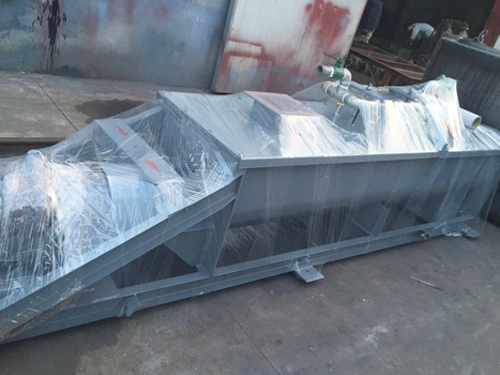SURVIVAL THROUGH QUALITY
PRODUCT CENTER
-
Pulse dust collector
-
Mine dust collector
-
Boiler dust collector
-
Metallurgical dust collector
-
Carbon plant dust collector
-
Chemical dust collector
-
Rubber dust collector
-
Woodworking dust collector
-
Single machine dust collector
-
Static electricity Dust collector
-
Cyclone dust collector
-
Wet dust collector
-
Filter cartridge dust collector
-
Insert valve (gate valve)
-
Ventilation butterfly valve (cold air valve)
-
Spiral conveyor (auger)
-
Scraper conveyor
-
Dust humidifier
-
Bucket elevator
-
Ash discharge valve
-
Material Handling Equipment
-
Wet scrubber
-
Dust collector
-
Dust removal filter bag
-
Dust removal bag cage
-
Polishing platform
-
Waste gas treatment equipment
-
Electric control cabinet
-
Fan
-
Smoke welding machine
-
Liquid level switch
-
Dust removal filter element
-
Aeration cushion
-
Sweeper
-
Dust suppression device
-
Solenoid valve

Double axis dust humidifier
A dual axis dust humidifier is a device that sprays water, stirs, and mixes powdered materials. The dual axis dust humidifier is mainly used under the dust collector in thermal power plants, and can also be used in industries such as chemical, metallurgical, mining, and building materials. The dual axis dust humidifier has achieved the appropriate humidity requirements by controlling the amount of water added.
The dual axis dust humidifier adopts two sets of spiral blades for stirring, which has the characteristics of stirring, small footprint, high special alloy or composite ceramic spiral blades, and long service life. The dual axis dust humidifier adopts a cycloidal pinwheel reducer transmission, which rotates smoothly and has low noise.
The dual axis dust humidifier has the characteristics of large processing capacity, compact structure, technology, stability, and simple maintenance. The dust processed and recovered by the dust collector enters the feeding hopper of the SJ dual axis dust humidifier through the discharge and ash discharge valve. The dust is then fed into the spiral conveying blades inside the machine by the rotating impeller of the ash discharge, and pushed into the humidification main cylinder through the impeller. Under the uniform mixing of the mixer, water is sprayed evenly into the material, and under the action of uniform speed stirring, the dust is humidified. The humidified dust is slowly sent out of the discharge port under the linear thrust of the multi column spiral and discharged into the dust conveying device outside the machine.
The dual axis dust humidifier has achieved the appropriate humidity requirements by controlling the amount of water added. The SJ dual axis dust humidifier adopts two sets of spiral blades for stirring, which has the characteristics of stirring, small footprint, high special alloy or composite ceramic spiral blades, and long service life. The SJ dual axis dust humidifier adopts a cycloidal pinwheel reducer transmission, which rotates smoothly and has low noise. The dual axis dust humidifier is fed from the top and discharged from the bottom, with a reasonable structure. The sealing between the joint surfaces of the dual axis dust humidifier is tight and operates smoothly. The dual axis dust humidifier is equipped with a humidification water spray system, which sprays water evenly and adjusts the water supply to meet the needs. The dual axis dust humidifier adopts a manual oil pump to centrally supply lubricating grease to four transmission bearings. The dual axis dust humidifier is convenient for equipment use and maintenance, and has the advantages of time-saving.
The dual axis dust humidifier is fixed on a bracket as a whole. When the machine is in operation, the impeller feeder uniformly inputs the dust in the material bin into the main machine, and then the high-speed running blades drive the material into the mixing drum with a ratchet. The high-speed running ratchet forcibly mixes the ash with a limited amount of water. During the mixing and dispersion process, the standard mixture with a predetermined humidity is pushed towards the discharge port to solve the problem of secondary dust. And its blades and stirring rods are made of materials, which improves their service life.
Characteristics of dual axis dust humidifier:
1. Two sets of spiral blades are used for stirring, which has the characteristics of stirring and occupying less space. The spiral blades are made of high special alloys or composite ceramics, and have a long service life.
2. Pinwheel reducer transmission, smooth rotation, low noise.
3. Feed from the top and discharge from the bottom, with a reasonable structure. The sealing between the joint surfaces of the dual axis humidification mixer is tight and runs smoothly.
4. Equipped with a humidified water spraying system, the water spraying is uniform. It adopts a designed double casing pipeline structure, combined with the characteristics of gas-solid two-phase flow in the pneumatic ash conveying process, which can achieve continuous disturbance and automatic dredging of fly ash deposition or blockage in the pipeline. It has the characteristics of clever conveying mechanism, good performance, low conveying flow rate, and low wear and tear.
5. At the same time, it improves the performance of the pneumatic ash removal system, saves energy and water in power plants, reduces land occupation, and comprehensively utilizes fly ash. Adjust the water supply to meet the needs.
6. The manual oil pump centrally supplies lubricating grease to four transmission bearings, making it convenient for equipment use and maintenance, and has the advantage of saving time.
The dual axis dust humidifier can be used under the dust collector in thermal power plants, as well as in industries such as chemical, metallurgical, mining, and building materials. The dual axis dust humidification mixer is a device that sprays water and mixes powdered materials. By controlling the amount of water added, the equipment humidifies and mixes dry powder materials to the appropriate humidity, thereby avoiding the pollution caused by dust flying during transportation and loading and unloading of dry powder materials to the environment.

